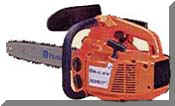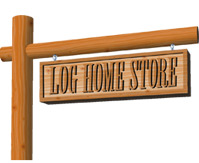Chain Tips
 A common oversight among chainsaw users is less than adequate chain maintenance. If your saw takes more effort than before to cut or if it cuts unevenly (pulls to one side) then the chain is probably long overdue for sharpening and maintenance. Typically if you find yourself “leaning” or “pushing down” on the saw while cutting it’s an indication it’s time to sharpen. Although you can take your saw into a shop to have it sharpened you can do it yourself and save time and money.
A common oversight among chainsaw users is less than adequate chain maintenance. If your saw takes more effort than before to cut or if it cuts unevenly (pulls to one side) then the chain is probably long overdue for sharpening and maintenance. Typically if you find yourself “leaning” or “pushing down” on the saw while cutting it’s an indication it’s time to sharpen. Although you can take your saw into a shop to have it sharpened you can do it yourself and save time and money.
Proper sharpening is not only important for cutting efficiency but using a dull saw can increase the wear on your bar and saw and can increase the likelihood of kickbacks. A dull roughly running chain increases wear and tear on you too – you’ve probably noticed more vibration and fatigue in your hands and arms.
Dirt and grime on the wood you cut can drastically dull your chain sometimes making sharpening necessary every couple of hours. If you have decided to sharpen your own saw and will be using it for several hours at a time you can either take more than one chain to use or sharpen your saw in the field.
So how do you know when the chain needs sharpened? The following guidelines can help:
- You have to apply pressure on the bar to cut rather than having the weight of the saw and bar be sufficient
- Your saw kicks out more sawdust than wood chips
- You can see light reflecting off the leading edges of the cutters. (this is a tough one to see for the first time. If the cutter is sharp there is no flat edge to reflect light it it’s dull there will be a hair this line of reflected light).
If you’re new to sharpening consider taking you saw to the local saw shop or a neighbor experienced in saw sharpening. Different types and sizes of saw chain need different sizes of files to sharpen. Additionally you’ll need a flat file to lower the depth gauges (rakers). Although many experienced chain saw operators will sharpen without using any sharpening guides you’ll get a consistently better job by using one of the many sharpening jigs that are available.
Remember though that even if your saw is sharp it will not cut properly if the depth gauges are set incorrectly. Depth gauges control how thick a chip of wood the cutters can remove at one time. If the depth gauge is higher than the top leading edge of the cutters than the cutter won’t be able to do it’s job regardless of how sharp it is. Conversely if the depth gauge is too low the cutters are trying to take too large a chip and will cut roughly and unsafely as the saw will vibrate more and the cutters have a greater possibility of breaking.
“








